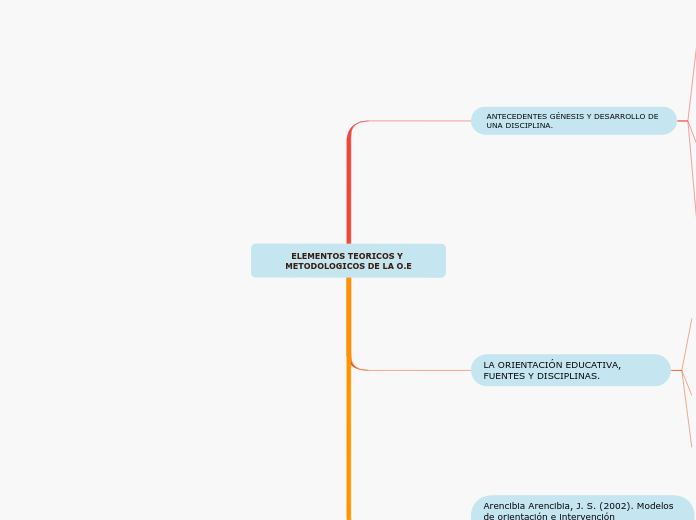da Hilda Gaytan Valadez. mancano 4 anni
308
ELEMENTOS TEORICOS Y METODOLOGICOS DE LA O.E

da Hilda Gaytan Valadez. mancano 4 anni
308

Più simili a questo

To name your story, you have to think about the overall message and what you want your audience to understand from the story. Also, make it relevant and easy to remember.
The middle of the story is where you add layers of complications that will lead to the end. Reveal more about the character's journey. Did their personality go through changes? How did they overcome the challenges? And as you build up the story’s central conflict, make it more personal to that character. Also, from the middle act, you have to lead into the final act.
There wouldn't be any tension and excitement in your story if there weren't any obstacles in your character's way.
A story is nothing more than a character overcoming a series of difficulties to reach the desired goal. Obstacles usually create suspense and conflict. In overcoming obstacles, there is growth: weak becomes strong; hatred turns into love; sadness into happiness; wrong into right; lies into truth; or evil becomes good.
See a few examples below:
Your character(s) need(s) motivation in order to solve the challenge(s).
Secondary characters might also have motives that lead them to cross paths with the main character or which might trigger them to help the main character.
Secondary characters also might have motivs beacuse of which they may cross path with main character or which might trigger them to help the main character.
Why does your character need to confront this challenge? What does he/she expect to accomplish by solving it?
See a few examples:
Each story has a main character and that character usually needs to solve a problem or challenge. The character's challenge is the one that creates tension throughout the story.
In most stories, there are 3 challenges. The number 3 is a mystical number symbolizing completeness. Try to come up with interesting challenges with which your character needs to struggle.
See a few examples below:
In the beginning of the story (or the exposition), you will need to introduce the setting and characters. You might also want to introduce the main conflict. This part of the story is important because it gives the reader necessary background information and maybe even a first insight into a character’s personality.
The ending of a story is essential. We all know that if the ending is weak, what happened before loses its importance. So make it unpredictable, but fair. A resolved ending answers all the questions and ties up any loose threads from the plot.
c) El movimiento Americano de "Counseling"
"Casos problema", y el Fracaso escolar.
b)El movimiento Psicométrico.
This is the closure section of the story.
See examples of possible outcomes below:
Características y diferencias Individuales.
Test psicometricos
Try answering these questions to come up with a closure:
- Have all the problems been solved?
- Is there a clear picture of what happens with each character in the story?
- Has the challenge transformed your main character?
- How do the characters feel in the end?
a) El movimiento de reformas sociales
This is the moment when the main character surpasses the last obstacle and finally faces their greatest challenge.
The climax usually follows one of these patterns:
Type in your answer.
Basada en formación y orientación
The setting (time & place) of a story can change throughout the plot.
Orientación pedagógica, facilita la elección de estudios.
Sensory details include sight, sound, touch, smell, and taste. These details are important because they create depth in your setting.
See a few examples below:
Padre de la orientación vocacional.
The weather is an important element in your story because it can highly influence the ambiance and the mood of the characters.
Asesoro a los estudiantes en sus problemas educativos
Does your story include catastrophic weather? See a few suggestions below or add your own:
- hurricane, earthquake, storm, etc
The time of the story can also change. It can describe the event of a single day or can include an entire year's plot. Anyway, don't forget to mention it.
Implantó un curso sobre Profesiones en la escuela
Your story can take place wherever your imagination will take you to.
For example: in an elevator, in an enchanted forest, etc. Don't forget to give details of the environment each time the setting changes, otherwise, the story can be confusing. Also, mention the seasons as each of them has unique weather and events.
Renacimiento
Characters are essential to a good story. Usually, the protagonist(s) is/are the most affected by the plot. Introduce a character by focusing on their actions, interests, and occupation, as the physical appearance doesn't make a difference in most cases.
Karl Marx (1818-1883).
Immanuel Kant (1724-1804).
Rene Descartes (1596-1650).
Aristóteles
What is your character's main goal?
Platón
Which traits best describe the character's personality? Choose more if necessary:
Sócrates
Choose the type of your chacter:
Type in the name of your character.
Frank Persons.
Add other qualities/attributes of the character.